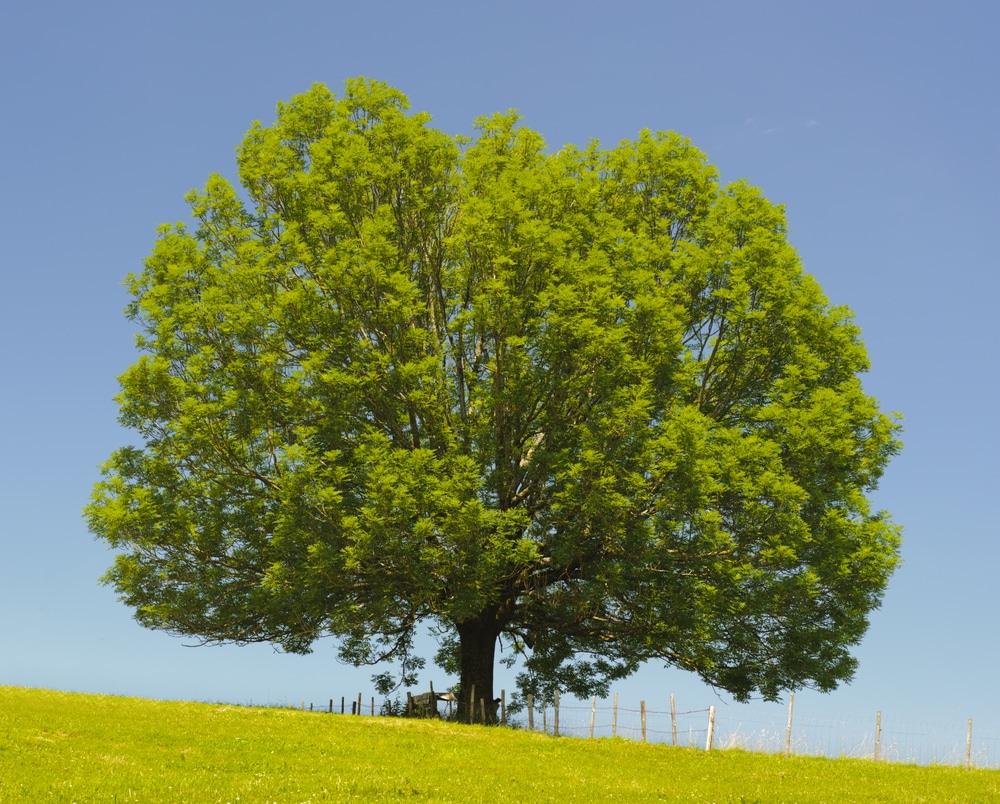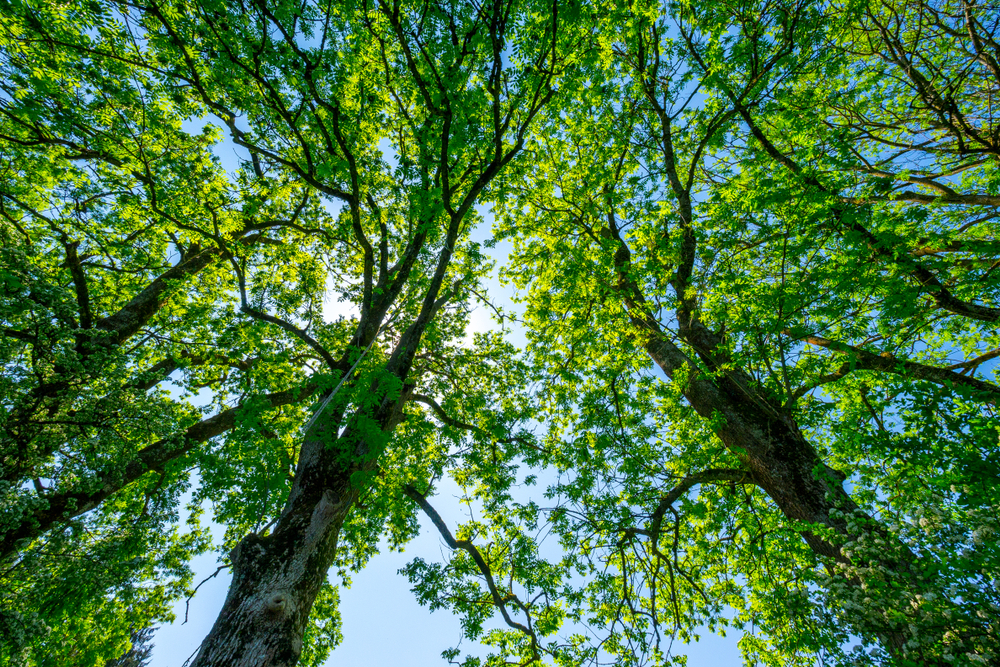The State of Missouri is home to hundreds of trees, shrubs, plants, and various greenery species. The beautiful foliage created by this plentiful vegetation is a sight to behold, providing food and cover to wildlife, drawing in pollinators, and decorating many yards, gardens, and recreational areas.
Some of the most common trees growing in Missouri are Ash Trees, and out of the 18 species of Ash that naturally grow in America, six species are native to the state. Other species of Ash have been cultivated in the state as well; however, this article will focus solely on the six native species of Ash Tree.
White Ash Tree (Fraxinus Americana)

The White Ash Tree is native to most of North America and is capable of growing in zones 4 through 9. Growing 80-100 feet tall, they are easy to cultivate, preferring rich, well-drained, organic soil. It is one of the most used trees for daily things such as tools, furniture, flooring, etc.
During summer, the green leaves have a pale underside appearing white at times, thus the name. The White Ash is commonly used for ornamental and landscaping purposes, as its leaves turn a beautiful, deep magenta during autumn.
Green Ash Tree (Fraxinus Pennsylvanica)

Native to Eastern and Central North America, the Green Ash Tree is very similar to its white cousin, with a few notable differences. Its leaves are more narrow and turn bright yellow in the fall, and they are also slightly smaller than the White Ash, usually capping at about 70 feet tall.
Out of the 18 species of Ash Tree in the US, the Green Ash is the most widely distributed across the country and can survive in zones 3 through 9. They prefer moist soil, commonly found along streams and ponds.
Biltmore Ash Tree (Fraxinus Biltmoreana)
The Biltmore Ash Tree has some surrounding controversy, with many stating that it is just a variation of the White Ash Tree. However, the Biltmore Ash is much less common and only grows in the Southernmost parts of Missouri, usually near swamps and other wetlands.
Scientists have distinguished the Biltmore Ash from the White Ash because it has four more chromosomes. Additionally, the leaves turn bright yellow in autumn instead of the White Ash’s purple color.
Sullivans Ash Tree (Fraxinus Smallii)
Once again, only distinguishable by its chromosomes, the Sullivan’s Ash Tree is very similar to the White Ash and Biltmore Ash. Sullivan’s Ash is commonly mistaken for a young White Ash, though it only grows in the Southen half of Missouri.
There are slight differences in the twigs and leaves of the Sullivan’s Ash, both being smooth and hairless compared to the textured tiny hairs on the White Ash. Sullivan’s Ash can grow in various habitats and is highly adaptable, surviving in zones 3 through 9.
Pumpkin Ash (Fraxinus Profunda)
The Pumpkin Ash is much less common in Missouri, mostly restricted to the Southernmost parts of the state. The Pumpkin Ash prefers moist soil, growing near swamps and marshes, and does best in zones 5 through 9. It can grow up to 100ft, and its leaves are the largest of any Ash Tree in Missouri. The base of the trunk is swollen like a pumpkin, thus the name. The Pumpkin Ash is typically found in the wild and not typically cultivated.
Blue Ash Tree (Fraxinus Quadrangulata)
Native to the Midwestern US, The Blue Ash Tree grows throughout most of the Northern half of Missouri. It is hardy in zones 4 through 7, preferring well-drained, sandy soil. It grows 30-80ft tall, usually off river banks or elevated slopes. Blue Ash gets its name due to the dark blue or black dye derived from its bark when soaked in water. In spring, tiny purple flowers bloom and hang in small clusters along the tree.
Conclusion
Ash Trees are a significantly beneficial part of our ecosystem, producing food for aquatic and land animals and strengthening streams and riverbanks. Their wood provides us with countless items we would not otherwise have, and Ash wood is often fairly expensive. Though these are just a few of the hundreds of beautiful trees that cover the vast state of Missouri, they are certainly not overlooked.
